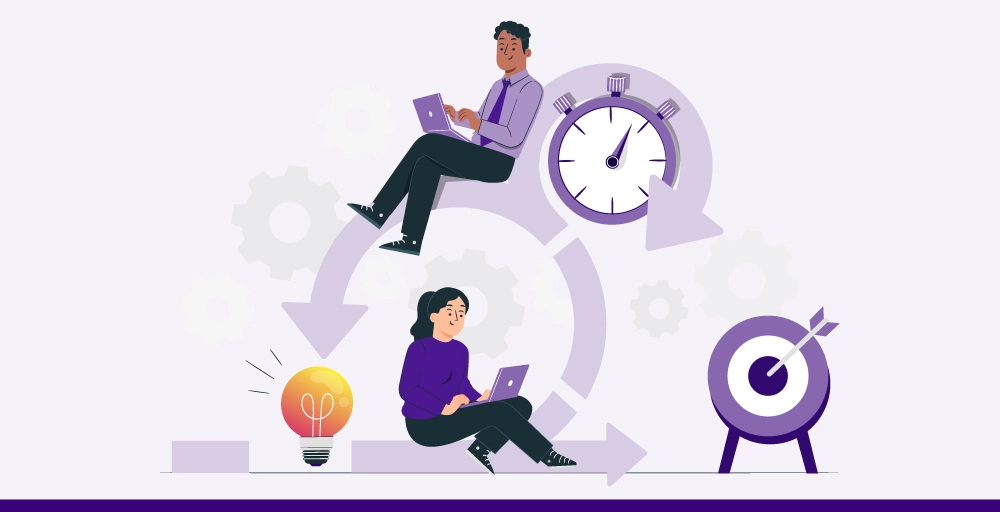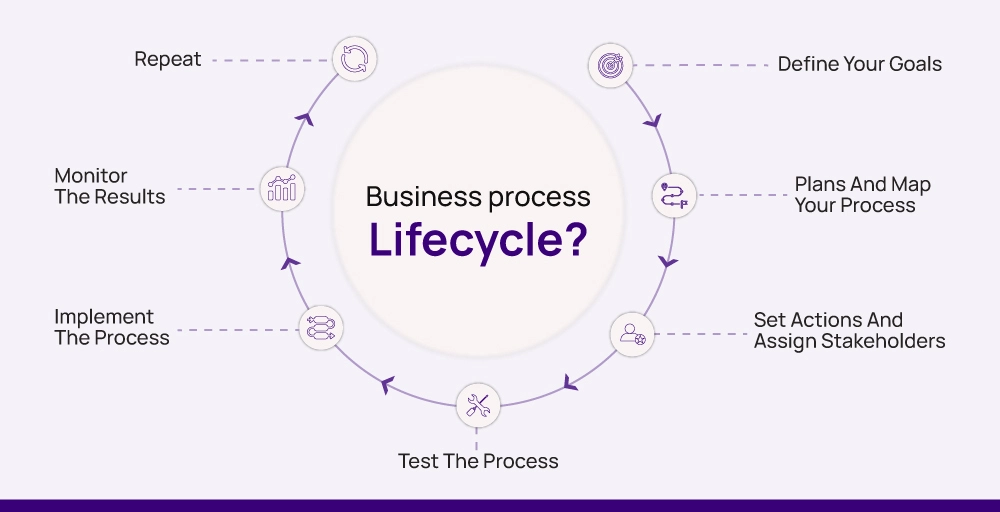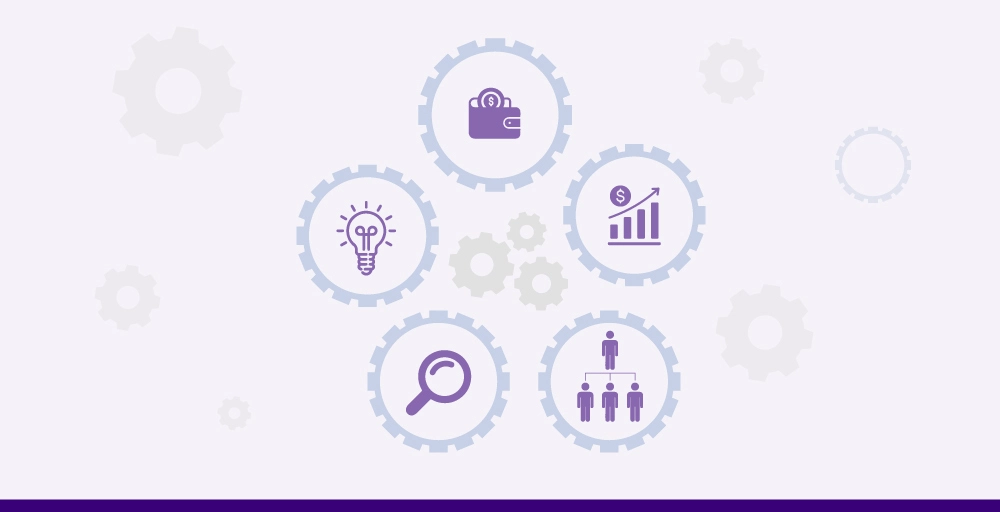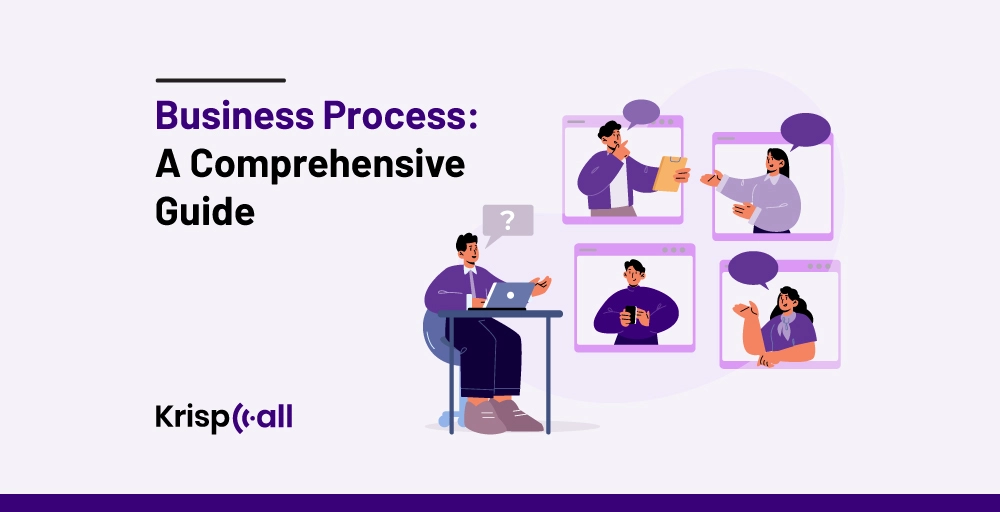Meet Harry, an entrepreneur and owner of a thriving website development company. As he eyes the profitable new contract, he is confused 😟 about whether to expand his team to handle the bandwidth. But there’s a problem—his business processes are a disaster. 😣
Like many other business owners, Harry knows that inefficient workflow is a waste of time. So, without a smooth operation, his team will fail to meet deadlines and miss out on profit opportunities.
But don’t worry. 😮💨In this blog, we will explore the significance of business processes, the tools that enhance these processes, and their benefits so that you can streamline operations and attain profits.
🔑 KEY HIGHLIGHTS
- A business process is a set of activities handled by a group of people aiming to achieve a specific organizational goal.
- There are three different types of business processes: Operational processes, Management processes, and Support processes.
- The advantages of using business process software are risk reduction, cost savings, automation, improved collaboration, and more.
- Some common terms used in business processes are business process mapping, business process management, business process modeling, and business process automation.
- Some tools that enhance productivity are workflow management systems, CRM systems, collaboration and communications tools, etc.
What is a Business Process?

A business process is a set of activities handled by a group of people who aim to attain a specific organizational goal. These activities are performed in a systematic manner, either by individuals or systems.
These processes directly impact a business’s success and growth. Completing one of these processes leads to accomplishing a specific organizational goal. When these processes are streamlined and efficiently managed, they help enhance productivity, innovation, and, ultimately, business success.
Business Process Examples
Business processes may differ depending on the type, industry, location, etc. However, some business processes are still very common in all companies worldwide.
Here are some of the common business process examples :
- Marketing Process: It involves processes such as market research, campaign planning, content creation, campaign execution, and performance analysis.
- Sales process: The sales process includes steps such as proposal sharing, negotiations, handling deals, delivery, and billing.
- Customer Service Process: It includes steps like complaint logging, issue resolution, status updates, documentation, etc.
Importance of Business Process
Business processes are important for streamlining business operations, which will help maintain consistency and efficiency. Standard procedures reduce errors and improve the quality of outputs.
A well-defined business process means better scalability, which will create an environment in which businesses can expand their operations seamlessly. It will also help to simplify training by providing clear guidelines and workflows for employees to follow and streamline the onboarding and skill development process.
Moreover, business processes also ensure compliance with industry standards and regulations. These guidelines help mitigate risks, avoid penalties, and protect the organization from reputation damage and financial loss.
Likewise, business processes contribute to continuous improvement and innovation within the organization. They help boost customer satisfaction by reducing response times and providing better service quality.
Reasons to Have Well-defined Business Processes
A well-defined process is crucial to smoothing the business processes. The key reasons to have well-defined business processes are:
- It helps to improve efficiency by streamlining business operations and reducing the time and resources needed.
- It helps maintain consistency by ensuring every task is performed the same way every time, leading to predictable outcomes and higher quality standards.
- Establishing guidelines in well-defined processes minimizes errors and ensures compliance with regulations.
- Well-defined processes result in scalability so that businesses can easily expand.
- Well-defined processes ensure better and consistent customer experiences, resulting in satisfaction and loyalty.
Types of Business Process
The business process may vary depending on the type of industry. Some of these are:
Operational Processes
Operational processes are crucial processes of an organization since they involve day-to-day activities that directly contribute to creating and delivering products or services to customers.
Operational processes are repetitive and structured processes that efficiently produce goods and deliver services according to predefined standards. In a manufacturing company, operational processes would include production, quality control, and logistics.
This process helps to maintain product quality, meets customer demands, and ensures timely delivery. Therefore, they directly impact customer satisfaction and directly contribute to generating revenue.
Management Processes
Management processes include planning, coordinating, and controlling organizational activities to achieve business goals and objectives. They also include decision-making, resource allocation, and performance monitoring at the business level.
At first, this process begins with strategic planning, where long-term objectives are set, after which strategies are developed to achieve them.
Further, this process provides the structure for decision-making, resource allocation, and the company’s overall path. Along with this, this process ensures that resources are effectively utilized in order to achieve the goals and objectives of the business.
Support Processes
In this process, the businesses are provided with the necessary infrastructure, resources, and services that smoothen the operational and management processes.
Support processes ensure that the business process is adequate with the necessary tools and individuals to support in areas such as administration, technology, and human resources.
The assistance provided by the support process helps to optimize efficiency and productiveness across the organization. Some examples of this support are IT support, facilities management, administrative support, etc.
What are the 7 Steps of the business process lifecycle?

There are seven steps of the business process lifecycle. These steps are:
Step 1: Define your goals
It is the initial step in the business process, which involves clearly identifying the objectives to be achieved. You need to understand the purpose of the process and the desired outcomes.
Step 2: Plan and Map Your Process
After defining the goals, the next step involves breaking down the process into individual activities. In this step, process mapping tools such as flowcharts or swimlane diagrams are often used in order to visualize the workflow.
Step 3: Set Actions and Assign Stakeholders
This step specifies the actions defined for each step in the process and assigns responsibilities to the stakeholders. Clear and concise communication is crucial since everyone involved needs to understand their roles and know what is expected of them.
Step 4: Test the Process
It is important to test the process before full implementation in order to identify any potential issues or areas for improvement. The testing is done with a small group or within a running trial period to evaluate the effectiveness of the process.
Step 5: Implement the Process
After the in-depth assessment of the process, necessary adjustments are made, and it is now finally ready to be implemented across the organization. In this step, defined procedures are established, and essential training is provided to employees.
Step 6: Monitor the Results
When the implementation process is complete, you must monitor its performance. This step also includes measuring key metrics to compare with the established goals. Here, the business employees collect data and analyze performance indicators.
Step 7: Repeat
This is the final step in the business process lifecycle, where the process is repeated in order to attain continuous improvement. This step involves repeating the process time and again to assess its effectiveness, identify opportunities, and make necessary adjustments.
Benefits of Business Process Software

There are several benefits of business process software. Among them, some of the major benefits are:
Reduction of Risks
It helps to eliminate potential risks by using the tools for implementing standardized procedures and minimizing errors. The business process also allows for the real-time monitoring and analysis of processes to reduce any probable risks immediately.
Automation
Automating day-to-day repetitive activities and workflows helps reduce manual intervention, allowing employees to focus on more strategic activities—automation results in enhanced productivity and smooth implementation processes.
Cost Savings
With the installation of software to automate tasks, reduce errors, and improve efficiency, the cost gets reduced significantly. These savings come from the result of lower labor costs, zero reduced waste, and optimized resource utilization.
Improved Collaboration
Business process software features, such as document sharing, task assignment, and communication, foster collaboration among team members. It also allows individuals to work regardless of their location and enhances efficiency.
Improved Agility
Business process software integration allows organizations to adapt quickly to changing market conditions. It easily helps to meet customer demands or internal requirements by modifying workflows, adjusting priorities, and establishing new processes.
What are the common terms related to business processes?
Some of the common terms related to business processes are:
Business Process Mapping
Business process mapping means the visual representation of a process. It is often done using flowcharts or diagrams, and clarification is provided by breaking down the process into logical steps.
Business Process Reengineering (BPR)
BRP is a complete change in the design of business processes aimed at achieving a drastic impact. It involves rethinking and restructuring organizational workflows to achieve efficiency, quality, and customer satisfaction.
Business Process Management (BPM)
BPM focuses on continuous improvement of the processes. It makes sure the organizational process is more effective and dynamic. It makes the execution of business processes better.
Business Process Modeling
Business process modeling is an abstract representation of the flow of business activities or functions. It is used to better understand, analyze, and improve the speed of task completion.
Business Process Automation
Business Process Automation automates manual tasks or entire business processes, achieving goals quickly and cheaply. It reduces the need for human intervention and minimizes errors.
Business Process Improvement (BPI)
BPI is the systematic effort to enhance the efficiency and quality of a business’s existing processes based on its operations, complex levels, employees’ skills, etc. It is done through analysis and implementation of more impactful ways to run a business process aimed at achieving better outcomes.
Business Process Analysis
Business Process Analysis is the systematic process of evaluating business requirements and best-suited solutions. It helps identify strengths, weaknesses, opportunities, and threats associated with the business. It further involves improving the process, policy development, organizational change, or strategic planning.
Business Process Documentation
Business Process Documentation encompasses the process of highlighting the detailed description of how the existing processes need to be executed. It involves making process maps, standard operating procedures (SOPs), and written descriptions in order to provide clear guidance on how tasks are performed within an organization.
What are Tools & Technologies for Optimizing Business Processes?
Here are some of the tools and technologies that aid in simplifying complex business processes are;
Workflow Management Systems (WMS)
WMS is software designed to automate, streamline, and manage the flow of work from start to finish within an organization. These systems provide a centralized location to define, execute, and monitor work progress, such as task assignments, approvals, notifications, etc. WMS enables organizations to improve efficiency, reduce manual errors, and ensure consistency.
Business Process Management (BPM) Software
BPM provides overall solutions by providing tools for designing, modeling, executing, and monitoring business processes. This software features process modeling, workflow automation, performance monitoring, and more. It enables organizations to identify inefficiencies, streamline operations, and drive continuous improvement.
Customer Relationship Management (CRM) Systems
CRM Systems are platforms of different software designed to manage interactions and relationships with customers. They include sales, marketing, and customer service activities throughout the customer journey. CRM systems provide a centralized database of customer information and automated key processes. They also help improve customer engagement, retention, and satisfaction.
Collaboration and Communication Tools
These are the tools that encompass a wide range of software applications and platforms that facilitate teamwork. Tools like project management platforms, instant messaging, document sharing, and video conferencing software enable information sharing and communication among employees.
Enterprise Resource Planning (ERP) Systems
ERP is a system that facilitates the integration of various business functions and processes into a single centralized system. It automates the core business activities like finance, human resources, procurement process, inventory, and production planning. In short, ERP systems help organizations improve efficiency, reduce costs, and make informed decisions.
What are the ways to measure your business processes?
Applying different techniques and strategies isn’t enough for an efficient business process. You also need to measure business process performance to evaluate its effectiveness, identify areas for improvement, and achieve organizational goals.
So, to measure the effectiveness of your business processes, you need to consider different metrics.
Some of these key metrics are:
- Key Performance Indicators (KPIs)
- Employee Feedback
- Quality metrics
- Process Cycle Time
- Process Cycle Time
- Root Cause Analysis
- Benchmarking
- Product Cost
- Resource Productivity
Final Words
The business process helps streamline operations and enhance efficiency. It also ensures a better customer experience by ensuring consistency at every task level.
Also, by integrating different tools, such as workforce management systems, business process management software, collaboration and communication tools, etc., organizations can simplify and automate their work processes to enhance productivity and generate revenue.
FAQs
What are the Challenges of Business Processes?
Some of the challenges of business processes are:
- Complexity
- Change in management
- Issues during integration
- Technological limitations, etc.
What are the key elements of a business process?
Some of the key elements of a business process are:
- activities,
- outputs,
- controls,
- resources,
- feedback mechanisms, and
- stakeholders.
What are the differences between Processes VS Procedures?
Processes are the series of actions taken to achieve a specific outcome within an organization. Procedures, on the other hand, are more detailed, step-by-step instructions that instruct how a particular task within processes should be performed.
While processes provide an overview of the workflow business operations, the procedures offer explicit guidance for individuals to perform tasks effectively and consistently.
What is Business Project Management?
Business project management is the process of managing resources and activities in order to attain specific business objectives. These goals must be achieved within a defined timeframe and budget.
What are the differences between Processes VS Projects?
Processes are a series of ongoing activities performed to achieve a specific outcome within an organization. Projects, on the other hand, are temporary achievements performed to achieve specific goals that require dedicated planning, execution, and resources. They are unique and non-repetitive activities with a clear beginning and end.





